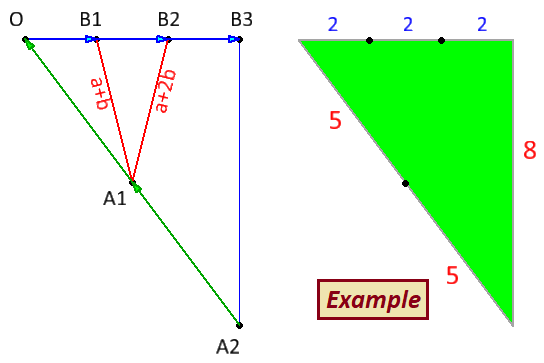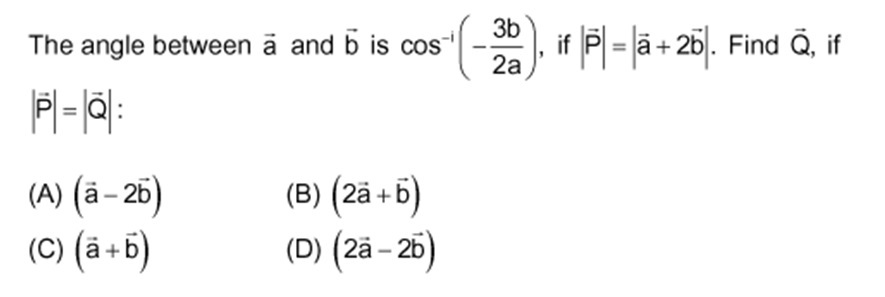This section requires Javascript.
You are seeing this because something didn't load right. We suggest you, (a) try
refreshing the page, (b) enabling javascript if it is disabled on your browser and,
finally, (c)
loading the
non-javascript version of this page
. We're sorry about the hassle.
2 solutions

One can also take a visual approach: The given cosine ( 2 a − 3 b ) suggests a right angle formed with side 3b and hypotenuse 2a! (One can imagine b=2 and a=5 to visualize a 6,8,10 right triangle) A similar right triangle of half the size is formed by vectors a and 1 . 5 b Adding or subtracting 0 . 5 b will give two symmetric points B1 and B2 Giving equal lengths A1B1 and A1B2, which are a + b and a + 2 b respectively!

Let's first of all find the value of ∣ P ∣ . ∣ P ∣ = a 2 + 4 b 2 + 4 a b ( 2 a − 3 b ) ∣ P ∣ = a 2 − 2 b 2
Now we can check the modulus of each options. The one which matches with the above value will be the answer.
So let's check the modulus of ( a + b ) . ∣ a + b ∣ = a 2 + b 2 + 2 a b ( 2 a − 3 b ) ∣ a + b ∣ = a 2 − 2 b 2 Hence Option ( C ) is correct.